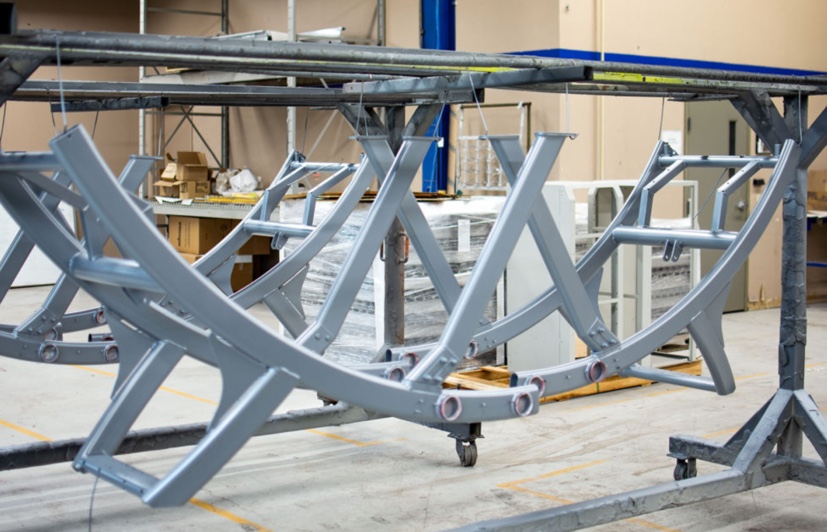 Aluminum anodizing is a fascinating process that we at DFI take a lot of pride in. Today, we will be discussing anodizing at a high level, with the hopes of providing a behind the scenes look into the sciences that make up this remarkable process.
Aluminum anodizing is a fascinating process that we at DFI take a lot of pride in. Today, we will be discussing anodizing at a high level, with the hopes of providing a behind the scenes look into the sciences that make up this remarkable process.
What Is Aluminum Anodizing? The process of anodizing is electrochemical. It converts the surface of the aluminum into a highly-durable, corrosion-resistant, aesthetically-pleasing anodic oxide finish.
The anodic oxide mentioned above comes from the aluminum substrate which contains nothing but aluminum oxide. Instead of being painted or plated onto the surface of the metal, the new layer becomes an integral part of the aluminum, ingrained into the substrate. As a result, the finish will not peel nor chip.
Moreover, the anodizing process ensures you can color and seal the metal afterward. How? Because the anodized surface is porous, allowing dye penetration prior to sealing.
Aluminum Anodizing for Metal Parts
Unbeknownst to many, we come into contact with anodized aluminum parts every day. Aerospace, defense, and marine components, consumer goods, electronics, sporting equipment, and plenty of other items all use anodized aluminum parts.
Why? Because of the array of benefits that it provides, both technically and aesthetically.
Firstly, durability is one of the major advantages. Anodized aluminum parts are incredibly hard wearing and tough. This makes them perfect for components that will be situated in harsh environments — from the depths of the ocean to the heights of outer space, anodize provides protection against elements of every kind.
Secondly, longevity. Raw aluminum corrodes and does not last very long before developing a white rust (oxide). Its thinner than most coatings so they can be utilized in hard-to-reach spots.
Lastly, anodized aluminum parts are environmentally-friendly. Since nothing is added to the metal, it is simple to recycle.
The Aluminum Anodizing Process
For every step in the aluminum anodizing process there is a series of subtasks. But at the highest level, here is what happens when your parts are moving through our anodize line:
Step One: Prepping/Cleaning
The first step is to clean the aluminum specimen. Regardless of the process, you should always clean your part to begin. This preparation activates the aluminum surface, as well ensuring no foreign debris interferes with the chemical reactions and finished product.
Step Two: Making an Electrolytic Bath
Afterward, we process your aluminum part into a bath of a sulfuric electrolytic solution and run an DC electric current through it.
The direct current will force a positive charge on the aluminum and a negative charge in the electrolyte plates found in the solution. This is when the actual anodizing takes place.
The reaction between the negative electrolytes and the positive metal opens pores on the aluminum’s surface. This allows the substrate to attach itself to the negative oxygen ions in the electrolytic solution.
Step Three: Examining the Results
The aluminum oxide formed here creates the anodic oxide barrier on the metal surface. As I mentioned earlier, this is the resistant, durable “coating” on the metal.
What Are The Differences Between Type II and Type III Anodizing?
Anodizing generally comes in two forms — Type II and Type III Hardcoat. While there are others, these are the most common and widely used types of anodizing.
- Type II — This is often referred to as “regular sulfuric anodizing”. The coating produced is very hard and is up to 1 mil thick. Here, the finish is sealed to contract the pores to increase the corrosion resistance qualities. You will find it used in computers, other electronics, and aerospace parts.
- Type III Hardcoat — Type III is typically performed at lower temperatures than Type II. It’s also thicker (up to 2 mil thick) and harder than its Type II counterpart. This makes it far more resistant to extreme use and scratching. Type III Hardcoat is equivalent to Rockwell 65 hardness on the C scale.
An important thing to note is that when adhesion is needed on Type III, a sealant isn’t usually added because the surface is tacky anyway. However, if you will be using dye, sealing is required to ensure the color doesn’t fade or rub off.
Cost Factors for Anodizing Aluminum
There are lots of factors that contribute to the cost of anodizing aluminum. So, we can’t tell you the exact cost of your project. However, these are the factors that affect the price:
- Type — Generally, Type III is more expensive since it requires more energy and time on the line.
- Masking — This has to be done by hand and a lot of the time the materials can’t be reused so it increases the price.
- Volume — Volume is tremendously important for determine the cost of a job. The higher the volume the less time we spend breaking down, changing over, or preparing another job – therefore price breaks are usually available for high quantity jobs.
- Please click here for the list of our offered specifications.
How Long Does Anodized Aluminum Last?
 Anodizing does reduce atmospheric corrosion that usually affects aluminum. However, that does not mean it eradicates it completely.
Anodizing does reduce atmospheric corrosion that usually affects aluminum. However, that does not mean it eradicates it completely.
The thin layer of aluminum oxide that the anodizing process provides will inevitably deteriorate over time. The period of the layer staying intact will depend on the quality of the aluminum oxide layer itself and the thickness. This could be anywhere from 10 to 20 years!
For more technical information on our process or help with your product application. Please contact a member of the DFI Team today

